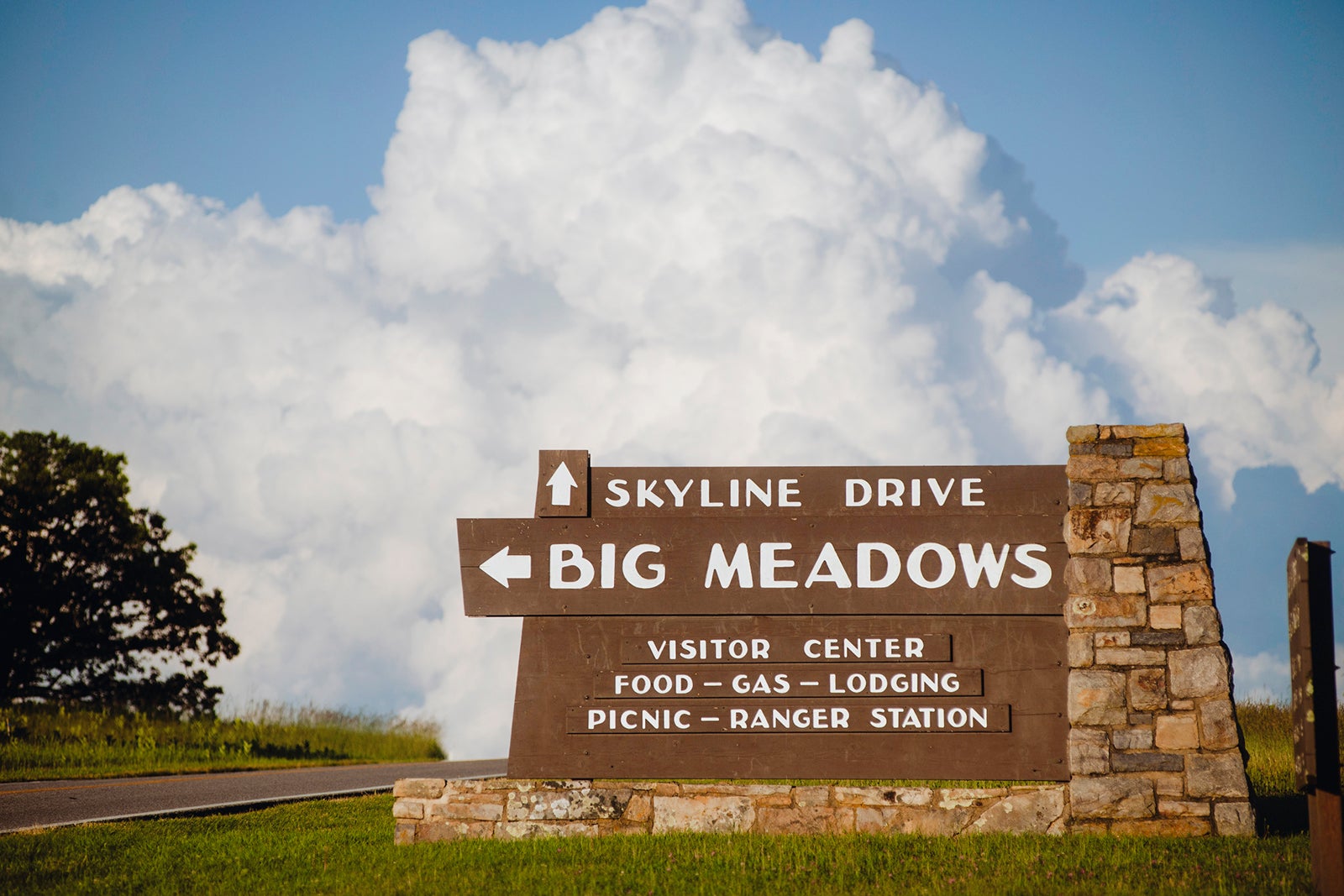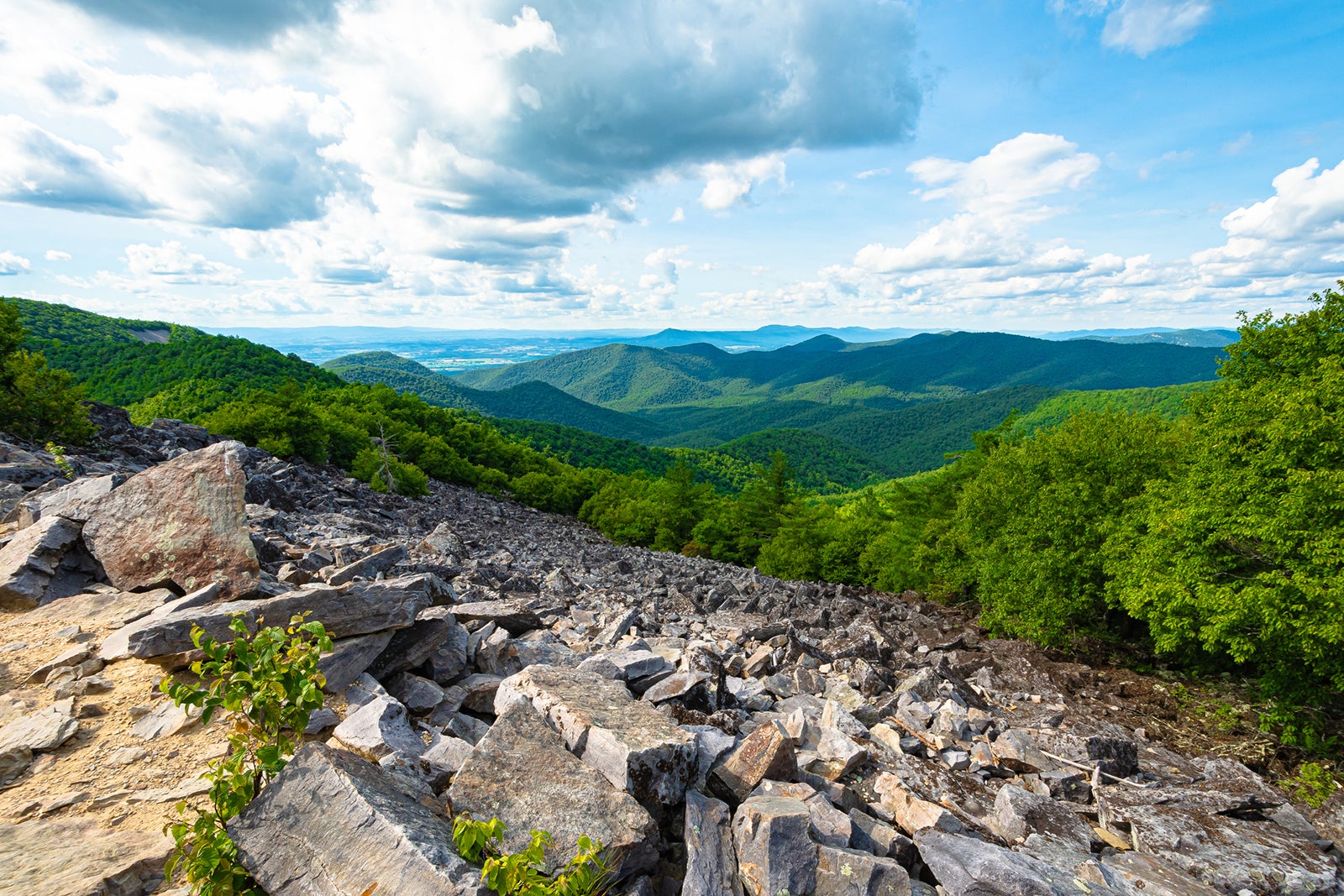Editor’s note: In celebration of National Park Week, which runs April 20-28, The Points Guy is publishing a series of articles focusing on the beauty and diversity of America’s national parks. We will share guides, news and tips that will help you get the most out of your next national park visit. The following story is part of this series.
When Virginia’s Shenandoah National Park was established on Dec. 26, 1935, it became the 22nd federally designated tract of land considered special enough to preserve for the American people.
But unlike many fabled national parks in the U.S. — where glacier-capped peaks protrude from meadows and granite monoliths rise from valley floors — Shenandoah National Park’s uniqueness lies not just in its natural landscape but also in its history.
For thousands of years, the Iroquois, Shawnee, Catawba, Cherokee, Delaware and Susquehannock nations hunted and gathered in the fertile Shenandoah Valley against a backdrop of the ridgeline now encompassed within Shenandoah National Park.
By the mid-18th century, European settlers began moving into the valleys below the Blue Ridge Mountains; they were logging, building saw and grist mills, raising cattle, and harvesting chestnuts and apples.
Now, well over a million people visit the 100-mile ridge annually to hike, fish, climb and explore the many off-shooting ridges that overlook the rolling foothills of the Piedmont plateau to the east and the Shenandoah Valley to the west.
Skyline Drive traverses the 4,000-foot ridge, providing easy access to countless pull-offs, scenic vistas and trailheads that lead hikers toward the park’s best-kept secrets.
Before you go

With just one road — Skyline Drive — cutting through the park’s center, Shenandoah National Park can feel more crowded than some of its busier counterparts. Visiting during non-peak seasons and mid-week can help you avoid traffic and heavy crowds.
Related: Tips for visiting the busiest national parks
Many of the park’s viewpoints can be seen from Skyline Drive, contributing to its busier feel. However, the best way to experience the park is by lacing up your hiking boots and heading into the backcountry. If you intend to camp, you should reserve a campground or get a backcountry camping permit in advance, then hit the trails from there.
The park’s 200,000 acres are divided into three districts, and while all three can be done in a single trip, it’s good to have an idea of which district you want to be based in.
Despite its proximity to Washington, D.C., the North District tends to be a bit quieter and offer a more secluded feel than the others. In contrast, the Central District — which has some of the higher peaks and popular destinations like Old Rag Mountain — is relatively busy. Like the North District, the South District also tends to be a bit quieter.
Getting there and around

There aren’t any park-run shuttle services in Shenandoah, but the entirety of the park is easily accessible by car. The northernmost entrance of the park in Front Royal, Virginia, is just 56 miles from Dulles International Airport (IAD).
Once you’re in the park, the 105-mile Skyline Drive traverses its entire length, passing most of the attractions and trailheads along the way. Make sure to grab an information pamphlet, which includes a map, from a visitor center at the start of the trip.
Spending a little time at the visitor centers will also allow you to familiarize yourself with the park. You can learn about its flora and fauna, find out about any closures, explore available guided nature walks and programs, and get some tips from the people who know the park best.
The best time to visit
Like any national park, the “best” time to visit depends on your priorities. During early October, deciduous trees at higher elevations become illuminated with reds, oranges and yellows; the bright colors work their way toward lower elevations as the month progresses. It’s a spectacular scene that comes with crowds, especially during peak foliage weekends.
Related: 10 of the best national parks to visit in the fall
Once the leaves fall and cold sets in between November and February, crowds dissipate, and opportunities to find solitude become endless. While temperatures tend to hover between the upper 20s and upper 30s Fahrenheit, it can snow at higher elevations, forcing temporary closures of sections of Skyline Drive.
Front-country campgrounds in Shenandoah are closed during winter, so lodging is confined to backcountry camping or hotels and lodges.
Early spring can be one of the best times to visit Shenandoah National Park. Wildflowers and trees begin to bloom, days become warmer and longer, and the summer crowds have not yet arrived. Weather can vary greatly, though, making planning a bit more difficult. The lowlands can sometimes be warm enough for shorts and a T-shirt, while higher elevations can still be covered in snow through March.
Memorial Day marks the unofficial start of summer, bringing warmer temperatures, longer days and crowds. Luscious greens take over the landscape, and cascading streams filled with brook trout beckon fly fishermen.
Thru-hikers taking the Appalachian Trail from Georgia to Maine are often seen hiking the 100 miles of trail that traverse the park. So, it can be a great time to meet interesting people. (Make sure to keep some cold beers or sodas around to share — it’s always appreciated.) Although it’s the most crowded time of year, you can still find some solitude in the forest by visiting mid-week, avoiding the most popular trails and spending time in the northern and southernmost parts of the park.
What to see and do

Hiking
Old Rag Mountain is one of the most popular hikes in the park — and rightfully so. There are several ways to reach the summit, but the 9.4-mile Old Rag Circuit is one of the most exciting (and crowded). The hike combines a mix of relaxed trails through the forested, steeper sections of trail and strenuous rock scrambles over the 2,348 feet of elevation gain.
Hikers are rewarded with 360-degree views at the summit, perfect for enjoying a snack before the hike down. You must obtain a day-use ticket in advance from March 1 through Nov. 30.
In the North District of the park, the 7.4-mile Little Devils Stairs Loop is an all-day, full-value hike; it passes through a gorge with cascades and waterfalls as well as through an old-growth forest, yielding occasional views along the way. On the southern end of the park, the 3.4-mile hike to Chimney Rock features a granite outcropping overlooking the valley below.
Biking
With more than 15,000 feet of uphill on a meandering wooded road with periodic vistas, Shenandoah’s Skyline Drive is a road biker’s dream. Some cyclists choose to ride the entire 105 miles of the road, arranging for a shuttle or stashing a car at either end of the park; others prefer a more leisurely out-and-back from various starting points along the way. There is also a 1-mile section of gravel riding on the Rapidan Fire Road in the Big Meadows area.
Rock climbing
At over a billion years old, the Blue Ridge Mountains are some of the oldest in the world. Over the years, glacial activity and erosion have exposed pristine granite, some of which can be found within Shenandoah National Park and serve as a playground for rock climbers.
Related: The ultimate Blue Ridge Parkway road trip
Scattered throughout the park, boulder fields present challenges for every skill set, but the two major roped climbing areas are Little Stony Man and Old Rag Mountain. The latter requires a more grueling approach and advanced climbing skills.
Unless you’re already an experienced outdoor climber, the best way to get the most out of climbing in Shenandoah is by booking a trip with a guide service like Blue Ridge Mountain Guides.
Waterfalls
From afar, Shenandoah National Park might not appear to have the dramatic terrain that would be home to countless waterfalls. But hidden in deep hollows, along streams that twist around boulders and plunge over granite outcroppings, there are enough waterfalls to keep visitors busy for a lifetime. The best time to visit the park’s waterfalls is during spring or after a period of heavy rain (before the hot and dry summers reduce many of them to a trickle).
At 93 feet, Overall Run Falls is the tallest in the park reachable via a strenuous 5.1-mile round-trip hike through a designated wilderness area. The hike to Dark Hollow Falls is much shorter and less strenuous, but it can also get relatively crowded.
Fly fishing
Shenandoah National Park is home to more than 70 boulder-strewn streams that cascade through thick forests toward the valley below, making it one of the East Coast’s premier fly fishing destinations. From March through May, native brook trout cruise the deeper emerald-colored pools, sipping freshly hatched mayflies from the water’s surface. This makes it the prime time for fly fishermen to visit.
You can reach most of the best spots by parking at trailheads along Skyline Drive and hiking down toward the lower stretches of streams. While online searches can yield specific spots to check out, simply grabbing a map and following a random stream downhill is often the best way to explore. To start, check out a few popular streams like Big Run or the Rapidan River.
Where to stay

Hotels
At 3,680 feet, Skyland Lodge is a 19th-century lodge at the highest point on Skyline Drive. This historic mountain retreat has been renovated over the years to feature premium and traditional rooms, suites, cabins and pet-friendly rooms across 28 buildings. Not only does the lodge offer sweeping views of the valley from its property, but its location is perfect for accessing some of the park’s most popular trails. Rates start from $196 per night.
Built in 1939 with stones from Massanutten Mountain and native chestnut trees, Big Meadows Lodge is another lodge with similar accommodations to Skyland, including cabins, suites and standard rooms. As the name suggests, the lodge sits adjacent to a large meadow, perfect for stargazing or viewing wildflowers when they bloom in spring. In addition to 72 cabins and 29 traditional rooms, the property features a taproom with local beers, perfect for relaxing after a long day on the trails. Rates start from $127 per night.
Camping
Shenandoah National Park has ample opportunity for backcountry camping — a unique opportunity that requires self-reliance and rewards visitors with tranquility they can’t find at the drive-in campgrounds. But for those who might not be comfortable or interested in hauling camping gear into the woods, the park does have five campgrounds within its boundaries.
Matthews Arm Campground — which offers a mix of reservable and first-come, first-served sites — is the first you come to when entering the park from the north. Big Meadows, in the Central District, requires reservations and is conveniently near some of the park’s most popular hikes.
The Lewis Mountain Campsite is just south of Big Meadows, but it’s much quieter and requires self-registration once you arrive. Both the Loft Mountain and Dundo Group campgrounds are in the southern part of the park; the former boasts views to the east and west and the latter is available only to groups. Loft Mountain has both first-come, first-served and reservable sites.
Where to eat

Located within Shenandoah National Park, both the Skyland and Big Meadows lodges offer menus that feature regional dishes like venison bolognese and shrimp and grits. The nearby towns of Front Royal and Charlottesville are both worth a visit in their own right.
The small city of Charlottesville has a college-town vibe thanks to the University of Virginia, but it also has an unassuming culinary scene. Check out the Dairy Market Charlottesville, a food hall that opened in 2019 in the historic Monticello Dairy Building. Grab a local beer at the Starr Hill Brewery or a sandwich from Citizen Burger Stand. The nearby Ridley, which is in the Draftsman Hotel, offers unique and traditional takes on Southern food, such as shrimp and grits and fried green tomatoes.
At the northern entrance of the park lies Front Royal, which is a bit quieter than Charlottesville but still has plenty of restaurants, wineries and breweries to choose from. Osteria Maria is an Italian restaurant that offers fresh pasta made in-house each day. Vibrissa Beer and Kitchen is a hip, modern brewery complete with a taproom, beer garden and full kitchen. Their menu is diverse, with options ranging from country-fried steak to pork belly miso ramen.
Tips
Before heading to Shenandoah, familiarize yourself with the seven “Leave No Trace” principles that will help you to be a conscientious and responsible user of our outdoor spaces. While this is important any time you head into the woods, it’s especially important in places like Shenandoah and other national parks that experience high visitation.
When camping, proper food storage is critical — especially during spring, summer and fall when black bears are out and about looking for an easy meal. Ticks can also be an issue, so make sure to pack plenty of bug spray, especially if you plan on hitting the trails.
If you plan to bring a pet along (Shenandoah is one of only a handful of national parks that allow pets), make sure to comply with their leash law, and don’t leave little gift bags around for the next hiker to find.
It’s also worth catching a sunset from one of the viewpoints on Skyline Drive and stargazing from Big Meadows while you’re in the park. Despite being relatively close to Washington, D.C., light pollution isn’t much of an issue here, so stargazing from the top of the ridge can be a spectacular experience.
Related reading:
- Key travel tips you need to know — whether you’re a beginner or expert traveler
- The best travel credit cards
- Where to go in 2024: The 16 best places to travel
- 6 real-life strategies you can use when your flight is canceled or delayed
- 8 of the best credit cards for general travel purchases
- 13 must-have items the TPG team can’t travel without




